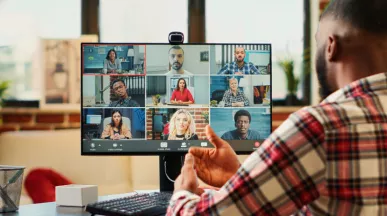8 Effective Reward and Recognition Strategies You Should Be Using

By Gene Park
Everyone likes to feel recognized in a way that resonates with them. But for managers who oversee large teams, individualized recognition can be a tall order to fill.
However, there are plenty of reward and recognition strategies that can help you provide your employees with meaningful recognition tailored to each individual. When employees receive different types of recognition on a regular basis it can increase employee engagement and enhance the company culture.
As you get to know everyone and learn more about your employees’ recognition preferences, here are some recognition strategies to consider:
Verbal recognition
Many employees like to be told verbally that they’ve done a good job. While some may prefer to be recognized verbally in a one-on-one meeting, others may like to be recognized during a team meeting or even during a company-wide event. Although an employee’s comfort zone may vary when it comes to being in the spotlight, many do like to be verbally acknowledged in some fashion.
SPOT recognition
When you see something good happening, say something. When your employees are making positive contributions, helping a coworker or exemplifying company values, let your employees know in real-time that you appreciate them. Recognizing employees on the spot is a highly effective recognition strategy to motivate employees.
Thank you notes
When an employee goes above and beyond in helping you, a coworker, a client or customer, a personalized thank you note that outlines what they did and why you appreciate their efforts can make their day.
E-cards
This is the digital version of a written thank you note and can be a great way to quickly show gratitude towards employees. E-cards can also be used to send a note of acknowledgement to your employees for reaching employment milestones, recognizing events like birthdays, or to send a holiday message to your entire team. This helps to build relationships with your team and makes employees feel connected.
Certificates
When employees achieve a significant goal or are celebrating a service anniversary, a printed certificate can be a fun way to acknowledge their hard work and showcase their dedication to the team and organization.
Points
If you have a points-based system in place, this can also be a great perk to let your team know they are doing great work. If your organization uses a rewards system that allows points to be awarded and redeemed for gifts or gift cards, determine which types of actions can be tied to awarding points and make sure to distribute points fairly among team members.
Gift cards
Gift cards can be another option to reward employees – especially if their favorite coffee shop or lunch spot has gift cards available. If your team has been working on a project for many months and the end is in sight or your team helped to secure business with a new client, gift cards can be a way to show appreciation for their dedication and hard work.
Tokens of appreciation
Even small gestures can be a memorable way to say thank you to your team. If your team is working late to fulfill a last-minute client request, ordering pizzas or bringing them coffee and bagels the following morning can be a way to let your team know that both you and the larger organization appreciate everything that they do.
When employers have implemented an effective employee rewards and recognition program utilizing any of these strategies, they have noticed an increase in employee engagement, a more connected company culture, and overall increased productivity across all levels of employees. Regardless of how employees receive recognition, it’s the act of recognizing a job well done that makes employees feel appreciated. Implement these strategies into your rewards programs to see the positive effects of reward and recognition strategies.
For more ideas on how to make your team feel like MVPs, check out 6 Ways to WOW Your Workforce.





